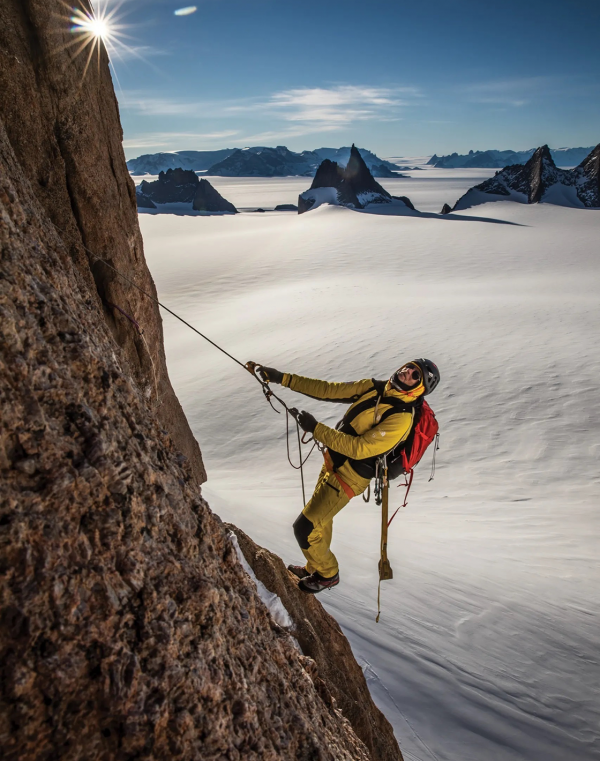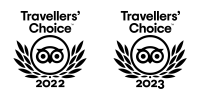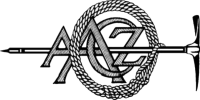- Home
- Nepal
- Adventure Activities
- Peak Climbing
- Mountain Expedition
- Local Tours
- Sirubari Village Homestay
- Ghale Gaun
- Kalinchowk Tour
- Halesi Mahadev - Maratika Cave package
- Chitwan Jungle Safari
- Day tour in Kirtipur
- Day tour in Kathmandu City
- Spiritual Tour to Muktinath
- Chitlang and Kulekhani
- Bardiya National Park
- Jeep Tour to Rara Lake
- Gosaikunda Lake
- Manakamana day Tour with cable-car ride
- 4WD Jeep Tour to Upper Mustang
- Family Holidays
- Heli & Mountain Flights
- Trekking Routes
- Kailash Mansarovar
- Bhutan
- Tibet
- Multi Country
- Domestic Flights
- Contact
- Home
- Nepal
- Adventure Activities
- Peak Climbing
- Mountain Expedition
- Local Tours
- Sirubari Village Homestay
- Ghale Gaun
- Kalinchowk Tour
- Halesi Mahadev - Maratika Cave package
- Chitwan Jungle Safari
- Day tour in Kirtipur
- Day tour in Kathmandu City
- Spiritual Tour to Muktinath
- Chitlang and Kulekhani
- Bardiya National Park
- Jeep Tour to Rara Lake
- Gosaikunda Lake
- Manakamana day Tour with cable-car ride
- 4WD Jeep Tour to Upper Mustang
- Family Holidays
- Heli & Mountain Flights
- Trekking Routes
- Kailash Mansarovar
- Bhutan
- Tibet
- Multi Country
- Domestic Flights
- Contact
Ama Dablam Expedition

An exciting Mountain Expedition
Mt. Ama Dablam has been considered the prettiest mountain in the world.It lies alongside Everest in the heart of the Khumbu valley offering a superb diversions close up view of Mt Lhotse, Mt. Makalu, Mt. Cho Oyu and Mt. Everest. If you have previous climbing experience and wish to participate fully as a team member of an expertly led expedition to one of the world's most impressive mountain then climbing expedition to Ama Dablam is the best suited. This Mountain is a technically demanding mountain for climbing in Nepal. It is considered an ornament of the Himalayas in Nepal.
4 - 16
Detailed Itinerary
-
Day 01: Arrival in Kathmandu (1,350m/4,428ft)
On arrival at the Tribhuvan International Airport in Kathmandu we will come airport to pickup you and escort you to your hotel. You may relax in your hotel room for the rest of the time or you may stroll around the streets of Thamel. -
Day 02: Trip Preparation Day and kathmandu sightseeing
we will visit office for a pre-trip discussion and meet our trekking guide as well as other participants. You will also be briefed on the nature of expedition, equipment and team composition. Later, we will visit some of the famous places around Kathmandu Valley. -
Day 03: Fly to Lukla (2,800m/9,184ft) then trek to Phakding (2,652m/8,700ft): 40 min flight, 3-4 hours trek
After breakfast, we drive to the airport for flight to Lukla. After flying above the breathtaking lush hills and snowcapped mountains, we reach Tenzing-Hillary Airport at Lukla. At Lukla, we meet the rest of our staff members and begin our trek to Phakding. To assist in acclimatization, we only have a short hike today. -
Day 04: Phakding to Namche Bazaar (3,440m/11,283ft): 5-6 hours
We begin trekking after breakfast. Our trail passes through pine forests and we also walk alongside the Dudh Koshi River. After walking for around an hour, we begin to see Mt. Thamserku (6,608m) on our right. We continue our trek through lush pine, fir and juniper forests, cross a few suspension bridges and reach Namche Bazaar. -
Day 05: Namche Bazaar (3,440 m/11,283 ft): acclimatization
This is the day set aside for acclimatization. While in the Namche village or upon returning from the hike to the Everest View Hotel, trekkers may also visit the local museum containing exhibits displaying the area’s native flora and fauna as well as the history of the Mount Everest region. -
Day 06: Namche Bazaar to Debuche
We trek further along the Everest route and pass through beautiful villages and cross the Dudh Koshi River while also enjoying magnificent views of the Himalayan peaks like Everest, Lhotse, Nuptse and Ama Dablam along the way. After ascending on a steep trail, we reach the Tengboche Monastery and spend some time there. -
Day 07: Debuche to Pheriche (4,300m/14,107ft): 5-6 hours
We hike to another village called Pangboche on our way to Pheriche. Pangboche is a scenic village surrounded by Everest to its north, Ama Dablam, Thamserku, and Kangtaiga to the east, the Kongde range to the south and the Imja Tse River flowing through the wide fertile valley. From here, we continue further up towards Pheriche, another beautiful village for an overnight stay. -
Day 08: Acclimatization
Today we climb a terrain above the Pheriche village as it is well suited to give us a good hiking experience in a cold condition. After an uphill climb to the top of the hill, we are rewarded with great views of the Himalaya -
Day 09: Pheriche to Ama Dablam Base Camp (4570m/15000ft): 5-6 hours
We begin today’s trek by walking back to Pangboche and crossing the Dudh Koshi River. Next, we ascend on a trail which will take us to the Ama Dablam Base Camp. -
Day 10: Acclimatization and Pre-climb training at Ama Dablam Base Camp
Our guides will provide training on peak climbing techniques and the best ways of using climbing gear such as the ice axe, climbing boots, crampons, harness, ascender, etc. The training will also include using ropes for climbing both up and down. The training will boost our confidence and climbing skills, thus increasing our chance of a successful summit of the mountain. -
Day 11-25: Ascending and Descending of Ama Dablam (6856m/22488ft)
From the Ama Dablam Base Camp we move further up to Camp 1 at 5,700m (17,400 ft) along the standard route. Generally, one night is spent at Camp 1 for acclimatization and before returning to the Base Camp for the final preparation to scale the summit. There are three camps above the base camp before reaching the summit. The ascent from Base Camp to Camp 1 is technically challenging. From Camp 1, we follow existing fixed lines and then establish new ropes wherever necessary both for ascent and descent. The climb from Camp 2 to Camp 3 is comprised of mixed rock, snow and ice, which is loose in certain places. The climb from Camp 3 to the summit is relatively less technical. After summiting the peak, we return back to the base camp. -
Day 26-27: Trek to Lukla
We trek back to Lukla via Tengboche, Namche Bazaar and Phakding. -
Day 28: Fly back to Kathmandu
We catch an early morning flight to Kathmandu after our long mountain journey. After reaching Kathmandu, we can take the much needed rest in our hotel room. -
Day 29: Leisure day in Kathmandu
This is a reserve day to accommodate any possible delay in the Lukla to Kathmandu flight. If the flight is as scheduled, we spend the day enjoying Kathmandu's delights. -
Day 30: Final Departure
we will take you to the airport, approximately 3 hours before your scheduled flight.
This trip can be redesigned or redeveloped as per your taste, For more information please e-mail us at This email address is being protected from spambots. You need JavaScript enabled to view it.
Cost and dates
We do small group trek or private trip as your request.
For quick information / contact us at whatsapp/viber + 977 9841815039
Or Drop us inquiry at This email address is being protected from spambots. You need JavaScript enabled to view it.
Tips & Resources
What's Included
- Arrival & Departure
- Hotel Accommodation in Kathmandu
- Permit
- Liaison Officer
- Garbage Management
- Insurance
- Member transportation
- Expedition Stuffs Transportation
- Member Luggage
- Food and Lodging
- Porters
- Base Camp Staff
- Staff Salary
- Base Camp Tent
- Base Camp equipment
- Comprehensive Medical kit
- Certificate
What's Excluded
- Nepal entry Visa fee
- Lunch & Dinner
- Extra night in Kathmandu
- Insurance
- Rescue Evacuation
- Personal Expenses
- Personal Equipment
- Toiletries
- Internet Service during the trip
Climbing Gears
- Ice Axe
- Crampons
- Harness
- Tape Slings
- Screwgate karabiners (2 lock, 2 unlock)
- Descender/Eight figure
- Plastic mountaineering boots
- Ascender/Jumar
- Helmet
- Snow Bar
- Rope
- Ice Hammer
- Ice Screw
Accessories
- Sleeping bag
- Headlight with batteries
- Water bottles
- Toiletries
- Small wash towel
Medical Supplies
- First-Aid kit
- Anti-diarrhea pills (Imodium)
- Anti-headache medication (Aspirin or Ibuprofen)
- cold medicine
- antibiotics for stomach infection
- anti-altitude sickness medication: Diamox (Acetylzolamide)
- water purification tablets
Personal Clothing items
Head
- Sun hat or scarf
- warm fleece hat
- Black Sunglasses
Upper Body
- T-shirts
- Weight thermal tops
- Fleece jacket
- Fleece Wind-Stopper jacket
- Waterproof jacket
- Down vest or jacket
Hands
- Lightweight gloves
- Heavyweight gloves or mittens with a waterproof shell outer
Lower Body
- Underwear
- Hiking shorts
- Lightweight cotton long pants
- Light and expedition weight thermal bottoms
- Fleece or wool pants
- Waterproof pants
Feet
- Thick, warm wool hiking socks
- Hiking boots with spare laces
- Camp shoes (sneakers or sandals)
Personal Hygiene
- Two tubes lip sun cream, at least 1 large tube regular sun cream (min. factor 30), some after-sun lotion in case you do get a sunburn
- toothpaste/brush set
- hand sanitizer gel
- 1 synthetic towel
Frequently Asked Questions
We suggest that people undertaking a first climb should have at least overnight trekking experience. For those who wish to take on a technically difficult, remote or extreme altitude mountain we'd expect participants to have appropriate experience and skills.
Climbing expeditions usually attract people in their twenties to fifties. Participants tend to be seeking a good quality, safe, well supported, good value and enjoyable adventure rather than the lowest cost.
The fitter you are, the more fun you (and your companions) will have. You will find guidance on preparing for your expedition on each adventure's web page (search here), our info packs and trip dossiers. A minimum level of fitness would have you being able to walk all day on uneven, hilly ground, carrying your day pack, and be able to get up again the next day. Many climbs will require a higher level of fitness and strength so you can carry heavy gear to high camps and really exert yourself on summit day.
Included are individual sleeping tents for the trekking phase of most climbing expeditions, with dining and kitchen tents. On the mountain participants share serious, proven mountain tents. Climbing teams are equipped with emergency communications and first aid equipment as well as more prosaic things like climbing and cooking gear.
The short answer - you! All participants are expected to behave in a responsible manner, taking due care of themselves and others. Your expedition leader is responsible for the group including participants and staff. He or she will advise, manage and assist everyone, sometimes with the support of an expedition first aider or doctor, and will be assisted by guides, sherpas, and you and your climbing colleagues, all of whom will have roles to play.
Despite the best precautions, people do sometimes fall ill, sprain something or develop symptoms of AMS. Our expedition leaders will manage your care keeping in mind what's best for you and the rest of the group. Precautions include first aid qualifications and kits, emergency communications, evacuation plans, your travel insurance cover and our pre-preparation and medical advisors.
Visit us
-
JP Marga, Thamel, Kathmandu, Nepal
-
+977-01-5365371
-
+977 98418-15039
(Whats App, Viber & Telegram)








